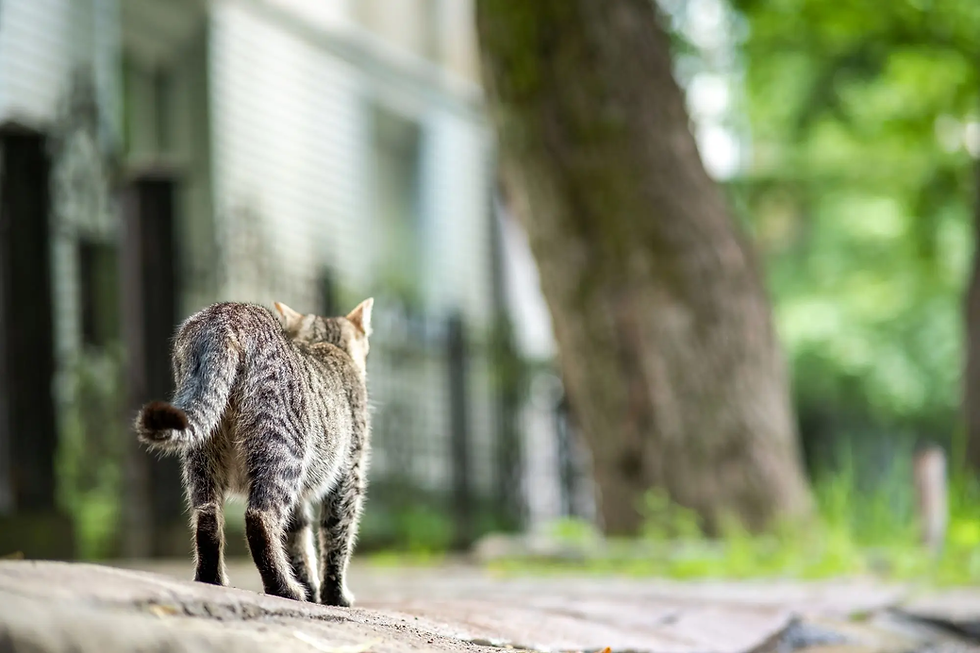Understanding Your Cat's Emotional Well-being
- V Carpio

- Dec 22, 2020
- 2 min read
Cats have a bad rep of being selfish and cold but most of the time they are loving, fun and warm. When my cat is happy, running about the place popping his head out of corner walls like a ninja, eyes wide like the galaxy, it makes me laugh and it brings joy to my life. I am certain that we bond over each other’s antics and it keeps him stimulated and healthy.
On the contrary, when I’m working and my cat is bored, he starts howling at me for attention and it breaks my heart. We can’t be at their side 24/7 but yet it is important to understand your cat's needs and keep their mind active to promote their emotional well-being.
Pet cats are mostly kept indoors for many reasons e.g. their safety. However, doing this can cause issues when the concurrent misperception of cats being low maintenance pets is upheld.
This leads to cats being housed in sub-optimal environments and with time it produces behavioural concerns such as aggression and house-soiling (Porters et al, 2014); it can also cause health concerns e.g. stress, resulting in urinary tract problems.
The best way to avoid any health or behavioural issues and to maximize their emotional well-being is to enrich your cat’s environment allowing them to fulfil their needs.
To do this right we need to understand what your cat needs to be happy. Below is a cat’s emotional system, it is segmented into three psychological instincts that can interrelate with each other.
Fulfilling each of these instinct ensures a happy cat.

Basically, environmental enrichment is ensuring your cat can exhibit its normal behavioural patterns. These essentially replicate the needs of their closest wild ancestor, the African Wildcat (Rodan et al., 2015).
This duty of care to our cats and the need to permit their instinctual behaviour to be expressed, is so prevalent today that it has made its way into the Animal Welfare Act 2006.
For ideas of how to enrich each of these emotional systems check out this article.
References
De Luca, A., Karen, C., Krandra, R.N., 1992. Environmental enrichment. Lab Anim. 21, 38–44.
Mertens, C., 1991. Human–cat interactions in the home setting. Anthrozoos 4, 214–231.)
Porters, N, De Rooster, H, Verschueren, K. Development of behavior in adopted shelter kittens after gonadectomy performed at an early age or at a traditional age. J Vet Behav 2014; 9: 196–206.
Rodan, I, Heath, S. Feline behavioral health and welfare. St Louis, MO: Elsevier Health Sciences, 2015.



Comments